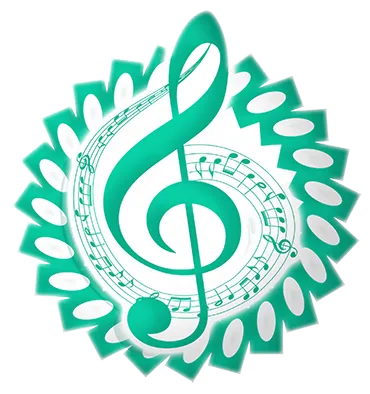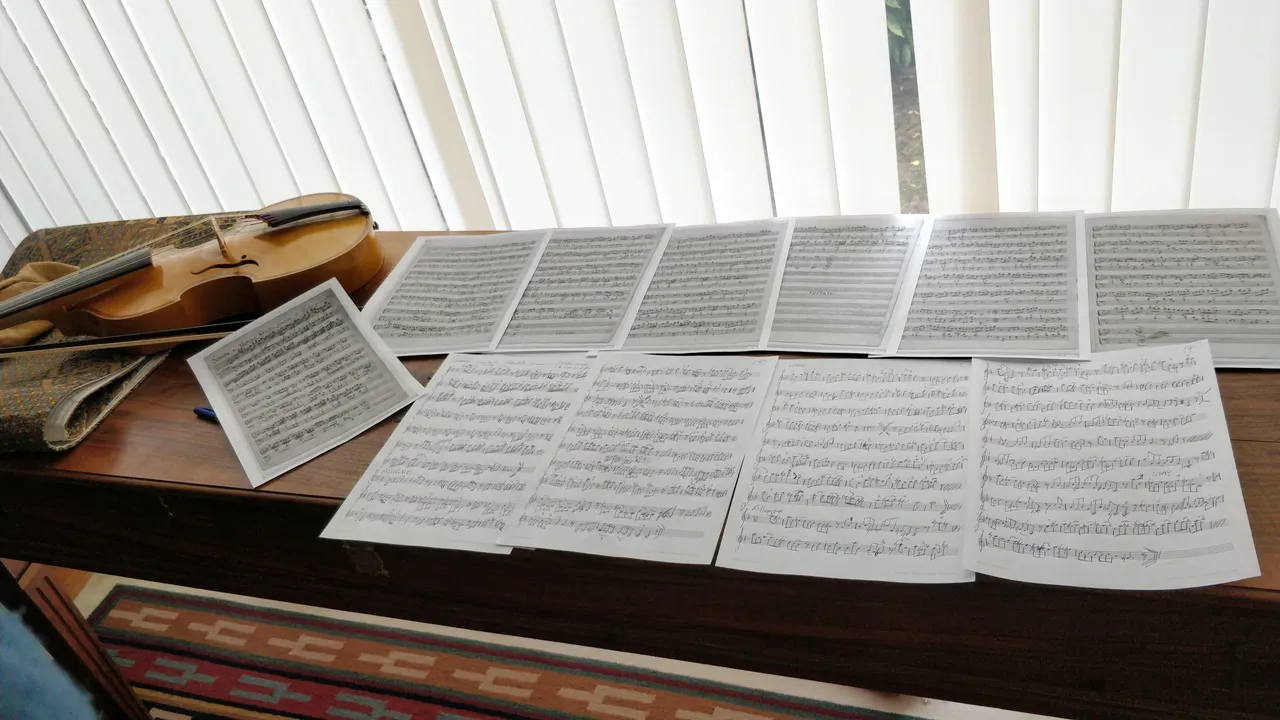
Finally, I found an afternoon to sit down a finish the scordatura transcription of the Locatelli Violin Sonata that I had started earlier in the week. I only had two more movements of the four left to finish... but finding the time to actually sit and write it out properly and neatly was a bit tricky. Still, this afternoon, I had some time... and once I started, I committed myself to finishing it... otherwise, it would just hang around until it was too late.
In a bit of a blasphemy (for keyboard players...), I was using the Clavichhord in the front room as a "table""... but I was pretty careful about it, I was only ever writing on multiple layers of thick paper, so there was no chance of scratching accidentally! However, it also did remind me that I needed to tune the instrument again sometime in the coming days... or all the hard work from the previous tuning would be forever lost as the pitch settled back into the lower previous pitch.
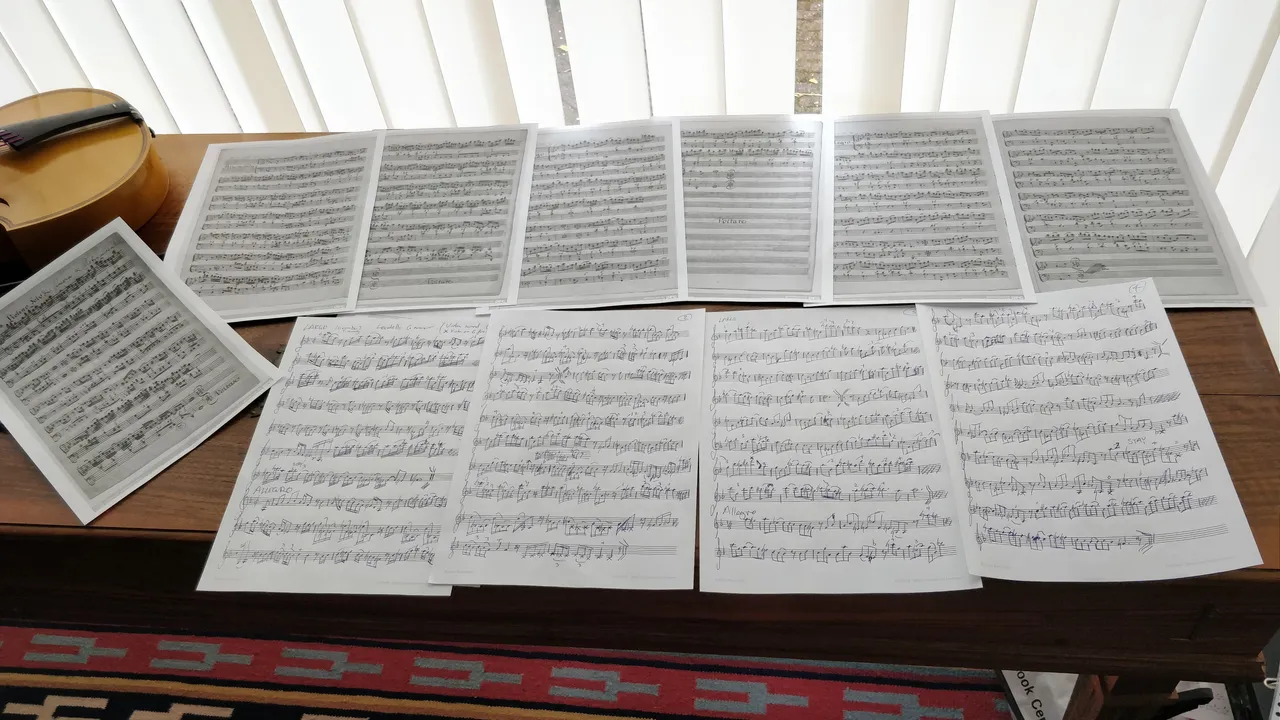
So, you can see the four pages of my scordatura transcription in the lower part... and the seven pages of the original manuscript of the Locatelli Sonata. The original manuscript also contained the score for the basso continuo underneath the treble part... so, it appears that I had condensed the writing.. but in fact, my transcription contained only the treble scordatura for the Viola dámore, and so it actually took up more space than the original treble part. Still, I managed to do it in a full four sheets of A4 manuscript paper... which means that the page turns whilst playing would be manageable.
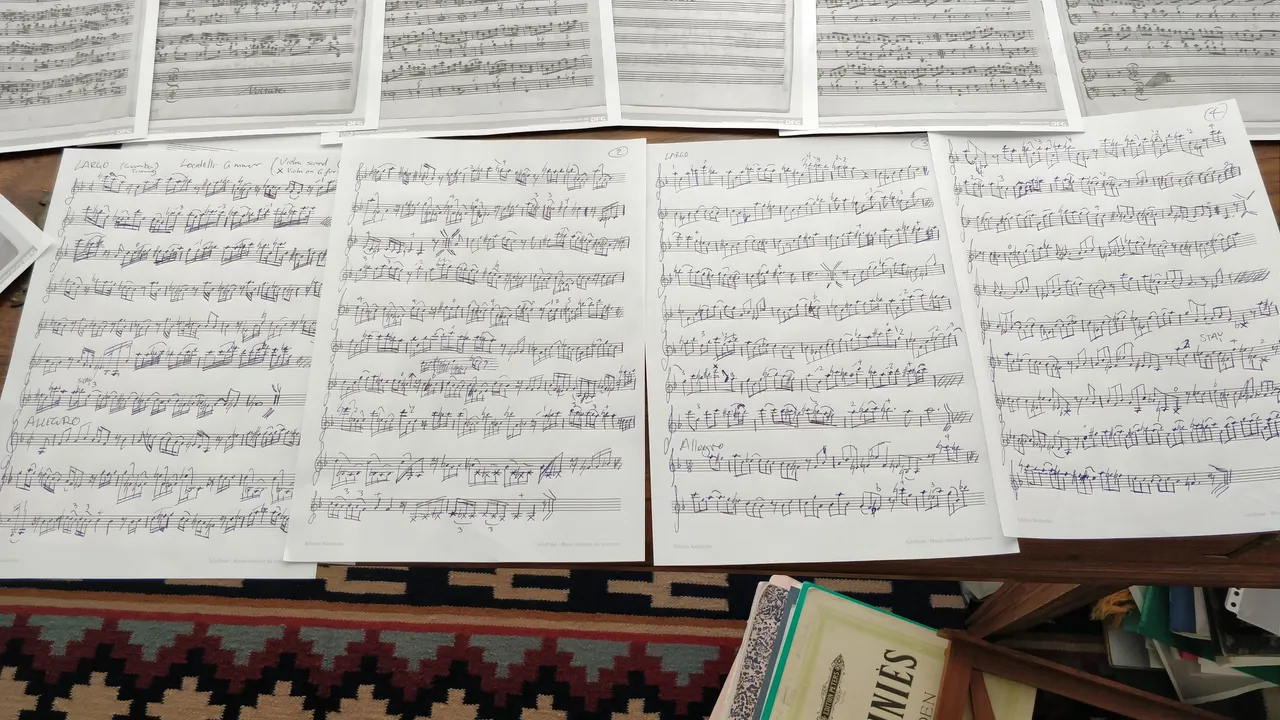
So, here you see the four pages of the scordatura transcription. I prefer to hand write these transcriptions for some reason... I'm a complete techno-nerd in all other respects... but I hate using and I hate the look of music notation software. It does mean that I occasionally write in some mistakes... but in some ways, the mistakes and subsequent corrections make the transcription of the piece uniquely mine!
Due to the fact that the transcription is for the Viola dámore whilst the piece is written for Violin/Flute, it means that there are many awkward fingerings and jumps as the piece doesn't naturally fall into the tuning and fingering patterns of the instrument that it WASN'T composed for... however, this was the request that was made (that I play this on Viola d'amore and not the violin...)... and like any good team player, you do it, get it done and done well... even if it is a bit awkward.
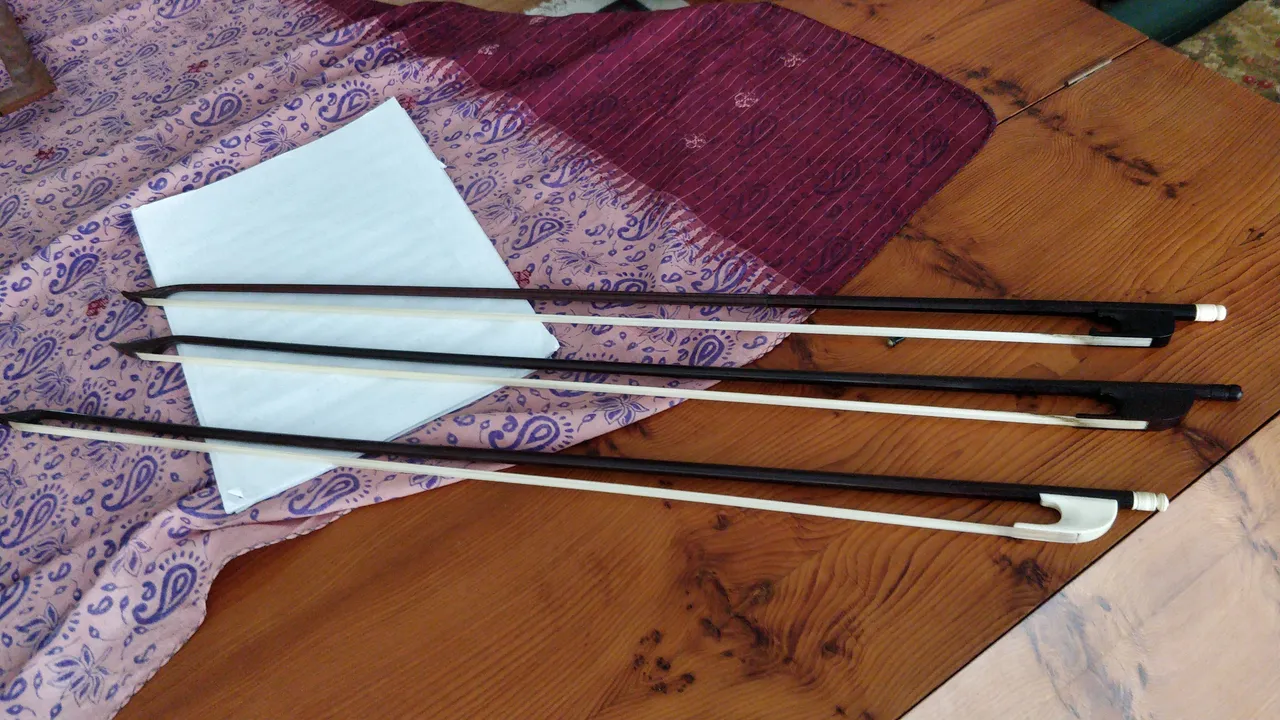
So, I had a bit of time to do some practice before the kids got back from the part... which meant that I had some time to try and pair the Viola dámore with an appropriate bow. Now, for this particular trip to Austria, I'm taking three quite different pieces (the Locatelli Sonata, a Concert by Rameau and an Anonymous sonata) and all three of them utilise most of the instrument from bass to treble. The Anonymous is the most broad in use of the range... whilst the other two tend to be more treble heavy but with the occasional travel to the bass end.
The treble end plays better with a lighter bow, but a light bow makes the bass strings speak much less well... meanwhile, a heavier bow means that the bass end plays and sounds rich and full, but the treble end runs the risk of being choked. Unfortunately, it isn't possible to continually swapping bows during the piece... so, I have to choose a paring for the instrument beforehand.
Pictured above are a selection of three Baroque era bows, the top being the one I normally pair with the Violin, and the other two being the ones that I normally pair with a Viola. The Violin bow was the most agile and the best sounding in the treble register... but the bass strings sounded terrible (not enough weight into the string to get them to vibrate properly, causing a metallic sound with not enough fundamental).
Of the two Viola bows, the one of the bottom was too heavy (plus, the ivory of the frog is damaged and likely to at a bad time...) and the treble was constantly choking under the weight (the lighter treble strings can't support the same weight as the thicker bass strings...)... so, just like any good Goldilocks story, the middle bow was the one that I've chosen for the pairing. I have a few other bows that I might want to try to pair with the instrument... but they are Classical-era bows and thus belong to a much later period than the compositions that I will be playing.
So, now the fun beings... I need to learn these pieces properly and have them ready soon!


Account banner by jimramones
